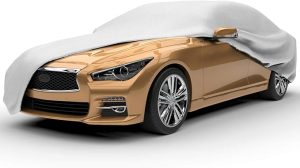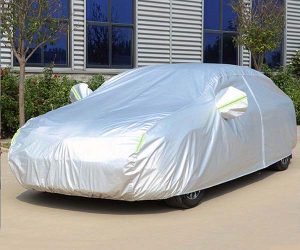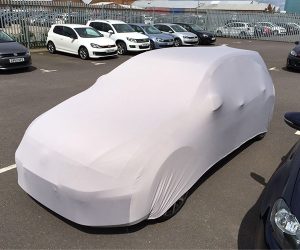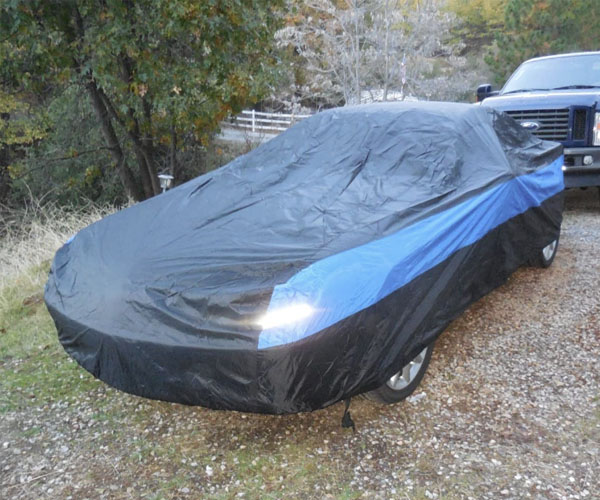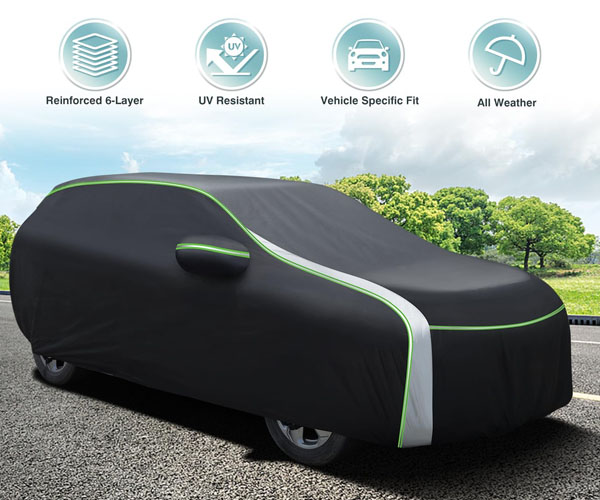The Ultimate Showdown: Fabric vs. Plastic Car Covers
Introduction
Finding the ideal car cover frequently comes down to a cloth vs plastic confrontation. The type of coverage you choose can have a big impact on safeguarding your car, one of your most important assets. Both cloth and plastic car covers have special advantages and drawbacks that are suited to different situations and conditions. This article compares fabric and plastic car covers in great detail, illuminating the subtle differences between the two materials and assisting drivers in making an informed choice.
It’s important to take into account a number of elements when comprehending the subtleties of car cover materials:
- Protection Needs: What level of protection does your car require? Are you guarding against harsh weather, dust, UV rays, or simply everyday scratches?
- Material Properties: Each material brings its own set of characteristics. Fabric covers, known for their breathability and flexibility, contrast with the sturdy, water-resistant nature of plastic covers.
- Environmental Considerations: The choice between fabric and plastic often hinges on the local climate and weather conditions your vehicle is exposed to.
- Maintenance and Durability: How much effort are you willing to put into maintaining your car cover? The durability and ease of care of the cover material play a vital role in your choice.
- Cost-Effectiveness: Balancing quality with cost is key. The right cover should offer the best protection for your car without breaking the bank.
This comparison of fabric and plastic vehicle covers tries to walk you through every step and provide you with a thorough understanding of each material. After reading this post, you should know exactly which kind of coverage best suits your needs and your car’s protection requirements.
The features of fabric and plastic car covers will be discussed in detail in the parts that follow. We’ll also look at the pros and cons of each material in various situations and offer helpful guidance on choosing the right cover for your car. This guide is intended to assist you in navigating the sometimes confusing world of vehicle covers, regardless of your level of experience as an enthusiast or new car owner. So grab a seat, and join us as we set out to find the best auto cover for your most valuable asset.
Section 1: Understanding Car Covers
Understanding the basic function these protective accessories play in vehicle maintenance and upkeep is essential when comparing fabric vs plastic car covers. Car covers are an investment in extending the life and maintaining the beauty of your car, not simply a basic shield. Whether you choose plastic or cloth, knowing the subtle differences between the two will help you make an informed choice that fits your needs and your car’s requirements.
- Primary Functionality:
- Protection from External Elements: Both fabric and plastic car covers are designed to offer defense against various external factors. This includes protection from harmful UV rays, dust, bird droppings, tree sap, and inclement weather conditions such as rain, snow, and hail.
- Theft Deterrent: An often overlooked aspect is the role of car covers in deterring theft and vandalism. Covers act as a barrier, making it more challenging and time-consuming for potential thieves to access the vehicle.
- Material Attributes and Impact:
- Fabric Car Covers: Typically made from materials like polyester, microfiber, or a blend of fabrics, these covers are known for their flexibility and custom-fit potential. The breathability of fabric covers is a significant advantage, allowing moisture and condensation to escape, thus preventing the buildup of mold and rust.
- Plastic Car Covers: Generally crafted from materials such as polyethylene or vinyl, plastic covers offer robust protection against water and heavy weather conditions. Their impermeability is a key feature, especially in areas with frequent rain or snow.
- Contextual Suitability:
- Environmental Considerations: The choice between fabric and plastic car covers largely depends on the local climate and environmental conditions. For instance, fabric covers may be more suitable in dry, temperate climates, while plastic covers excel in regions with heavy rainfall or snow.
- Indoor vs Outdoor Storage: The decision also hinges on whether the car is predominantly stored indoors or outdoors. Fabric covers are often preferred for indoor use due to their softer texture and breathability, whereas plastic covers are a go-to choice for outdoor protection.
- Customization and Aesthetics:
- Design and Color Options: Car covers come in various designs and colors, offering aesthetic appeal alongside practical functionality. While fabric covers provide a wider range of colors and patterns, plastic covers are generally more limited in aesthetic customization.
- Brand and Model Specific Fits: Many manufacturers offer custom-fit car covers for specific vehicle models, ensuring a snug fit and maximum protection. This is particularly important for unique or luxury vehicles, where tailored coverage is essential.
To summarize, the comparison between fabric and plastic vehicle coverings primarily focuses on identifying the unique qualities of each material and matching it to your needs. Covers made of fabric are perfect for indoor use in moderate weather since they are flexible, breathable, and have a more customized look. However, plastic vehicle covers are especially well-suited for tough outdoor settings due to their exceptional water resistance and durability. Carefully evaluating how exposed your automobile is to the environment, how it is stored, and your own preferences for car maintenance should all lead to your selection.
Section 2: Fabric Car Covers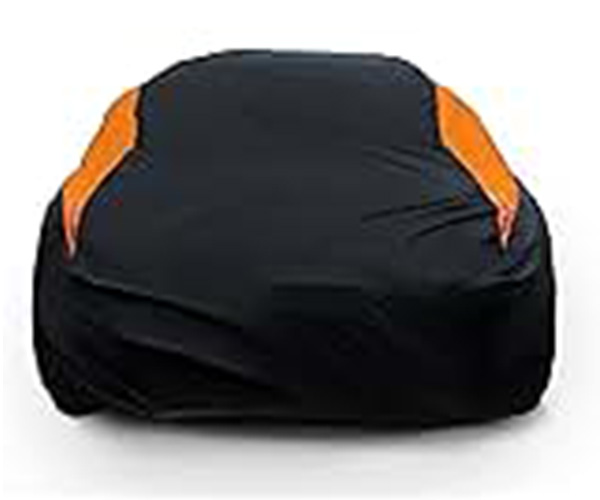
When researching car coverings, fabric alternatives come up as a favorite option for a lot of vehicle owners. Fabric vehicle coverings, which are available in a variety of styles and materials, provide a number of advantages catered to individual requirements and tastes. It’s important to comprehend these advantages and the drawbacks when comparing fabric and plastic car covers.
- Types of Fabric Used in Car Covers:
- Breathable Fabrics: These materials, such as cotton blends, are designed to allow air circulation. This feature is essential in preventing moisture accumulation under the cover, which could lead to rust or mold.
- Water-Resistant Fabrics: Some fabric covers are treated with water-resistant coatings. While not entirely waterproof, these covers can repel light rain and dew, offering sufficient protection in mild weather conditions.
- Advantages of Fabric Car Covers:
- Flexibility and Fit: Fabric covers are generally more flexible than their plastic counterparts. This flexibility allows for a more snug and custom fit, which is vital in ensuring that the cover stays in place, even in windy conditions.
- Breathability and Moisture Control: One of the significant advantages of fabric covers is their breathability. This characteristic helps in regulating moisture, ensuring that any condensation under the cover can evaporate quickly, thus protecting the car’s paintwork.
- Protection from Scratches: Soft fabric materials, like cotton, are gentle on a car’s paint. This softness is crucial for protecting the vehicle from scratches that can occur when putting on or removing the cover.
- Disadvantages of Fabric Car Covers:
- Limited Water Resistance: While some fabric covers are water-resistant, they are not fully waterproof. In heavy rain or snow conditions, they might not provide the same level of protection as plastic covers.
- Durability Concerns: Depending on the material quality and maintenance, fabric covers might not be as durable as plastic ones. They may require more frequent replacement, especially if used in harsh weather conditions.
- Ideal Conditions for Using Fabric Car Covers:
- Fabric car covers are best suited for indoor use or in areas with mild weather conditions. They are ideal for protecting against dust, light rain, and sun exposure.
- For those living in areas with occasional light rainfall, water-resistant fabric covers can be a suitable choice, offering a balance between moisture protection and breathability.
When comparing fabric and plastic car coverings, it is evident that the former is superior, especially when it comes to breathability and the soft protection it provides. To make an informed choice, you must, however, be aware of their limitations with regard to durability and water resistance. For car owners who prefer flexibility, fit, and scratch prevention, cloth car covers give an attractive choice. In the end, the decision is based on personal preferences, the kind of car, and the surrounding circumstances. The benefits of plastic car covers and how they stack up against their cloth equivalents in terms of providing the best possible protection for cars will be discussed in the following section.
 Section 3: Plastic Car Covers
Section 3: Plastic Car Covers
Plastic vehicle covers have a special set of qualities and are frequently praised for their strong defense against inclement weather.
An explanation about plastic car covers
The main purpose of plastic car coverings is to provide the best possible defense against moisture, including rain and snow. Their construction often consists of sturdy materials that are less breathable than fabric, which makes them the perfect option for outdoor storage—especially in humid areas.
Kinds of Plastic Used for Automobile Covers
- Polyethylene: A common material in plastic car covers, polyethylene is known for its strong, durable nature. It is often used in thicker, more protective covers that are designed for long-term outdoor use.
- Vinyl: Vinyl covers are heavier and more robust. They provide excellent protection against extreme weather conditions, including heavy rain, snow, and even hail.
Advantages of Plastic Car Covers
- Superior Water Resistance: The primary advantage of plastic car covers is their ability to repel water effectively. This makes them ideal for use in regions with heavy rainfall or snow.
- Durability and Longevity: Plastic materials tend to last longer, resisting wear and tear caused by the environment. This makes them a more economical choice in the long run.
- Cost-effectiveness: Despite their durability, many plastic car covers are surprisingly affordable. They offer great value for money, especially considering their lifespan.
Disadvantages of Plastic Car Covers
- Breathability Issues: Unlike fabric, plastic is less breathable, which can lead to moisture buildup underneath the cover. This can potentially cause issues like mold or mildew, especially in humid conditions.
- Potential for Moisture Buildup: Due to their impermeability, plastic covers can trap condensation, which may harm the car’s paint if left unchecked.
- Rigidity and Fit Concerns: Plastic covers are often not as flexible as fabric ones. This can make them harder to fit snugly over some car models, potentially leading to gaps or loose areas where dust and debris can enter.
Ideal Conditions for Using Plastic Car Covers
- Heavy Rainfall Areas: Perfect for places that experience frequent and heavy rains.
- Winter Climates: Ideal for snowy regions, offering excellent protection from snow and ice.
- Long-Term Outdoor Storage: Great for cars that need to be stored outdoors for extended periods.
Real-World Examples and Case Studies
- A study involving vehicles in coastal areas showed that cars covered with polyethylene covers had significantly less corrosion than those without covers.
- In regions with harsh winters, car owners have reported better results with vinyl covers, noting their effectiveness in keeping snow and ice off their vehicles.
Section 4: Comparative Analysis
The main takeaway from this comparison of fabric and plastic car covers is that each material has particular advantages and disadvantages that are suited to different user requirements and environmental circumstances. Let’s examine their distinctions in more detail:
- Weather Suitability:
- Fabric car covers:
- Excel in moderate weather conditions.
- Offer breathability, crucial in preventing moisture buildup and thus mold and mildew formation.
- However, they might fall short in extreme weather, especially heavy rain or snow, due to limited waterproof capabilities.
- Plastic car covers:
- Ideal for harsh weather conditions, like heavy rain, snow, or intense sun exposure.
- Their water-resistant nature provides excellent protection against moisture.
- But, in high humidity conditions, the lack of breathability can trap moisture, potentially harming the car’s exterior.
- Fabric car covers:
- Durability and Maintenance:
- Fabric covers:
- Tend to be more flexible and softer, reducing the risk of scratches.
- Their lightweight nature makes them easier to handle, clean, and store.
- However, they may wear out faster than plastic covers, especially when exposed to harsh environmental elements.
- Plastic covers:
- Generally more durable and better suited for long-term outdoor use.
- Their robustness makes them more resistant to tears and punctures.
- On the downside, they can be cumbersome to manage and require more space for storage.
- Fabric covers:
- Cost Implications:
- Fabric covers often come with a higher price tag due to the quality of materials and the breathability factor.
- Plastic covers, on the other hand, are usually more budget-friendly, making them a cost-effective option for long-term protection, especially in severe weather conditions.
- Environmental Impact:
- The environmental aspect of the Fabric vs plastic car covers comparison cannot be overlooked.
- Fabric covers, especially those made from natural or recycled materials, are generally more eco-friendly.
- Plastic covers, while durable, contribute to plastic waste, and their production has a higher environmental footprint.
In conclusion, there are a number of considerations to weigh when deciding between fabric and plastic car covers, such as cost, weather adaptability, durability, and environmental impact. This comparison emphasizes how crucial it is to weigh your demands, the weather where you live, and the specifications of your car before making a purchase. Every kind of cover has its own benefits, and the ideal option ultimately comes down to the particular needs of the vehicle owner.
Finding the ideal shield for your automobile friend to ensure its durability and immaculate condition is more important than simply comparing the qualities of fabric and plastic car coverings. Whichever material you prefer—breathable, flexible fabric or sturdy, weather-resistant plastic—the choice you choose should fit both your needs and the needs of the environment your car lives in.
Section 5: Making the Right Choice
When it comes to deciding between fabric and plastic car covers, the choice largely depends on a variety of factors unique to each car owner. Here, we delve deeper into how you can make an informed decision in the fabric vs plastic car covers comparison, considering your specific needs and circumstances.
- Climate and Environmental Conditions:
- Fabric Car Covers:
- Ideal for mild, dry climates where the primary concern is dust and sun protection.
- They offer better breathability, which is crucial in preventing moisture accumulation that can lead to mold or rust.
- Plastic Car Covers:
- Best suited for areas with harsh weather conditions, especially heavy rain, snow, or hail.
- Their superior water resistance makes them a preferred choice for outdoor storage in wet climates.
- Fabric Car Covers:
- Vehicle Usage and Storage:
- Occasional Use and Long-term Storage:
- For vehicles that are not used frequently or are stored for long periods, fabric car covers are often recommended due to their superior breathability.
- Daily Use:
- In case of regular usage, plastic car covers might be more practical as they are easier to clean and provide quick protection against sudden weather changes.
- Occasional Use and Long-term Storage:
- Maintenance and Durability:
- Fabric Car Covers:
- Require regular maintenance as they can absorb pollutants and moisture.
- Some high-quality fabric covers are treated to resist water and UV rays, increasing their longevity.
- Plastic Car Covers:
- Typically more durable and require less maintenance.
- However, they can be bulkier and less flexible, making them harder to handle and store.
- Fabric Car Covers:
- Budget Considerations:
- While plastic car covers are generally more affordable, investing in a high-quality fabric car cover might be more cost-effective in the long run, especially if it provides better protection suited to your specific environment.
- Customization and Fit:
- Fabric covers can be more easily tailored for a custom fit, which is essential for optimal protection.
- Plastic covers, though less flexible, often come in universal sizes that can fit a wide range of vehicles.
- Environmental Impact:
- Consider the environmental footprint of your choice. Fabric covers, particularly those made from sustainable materials, might have a lower environmental impact compared to plastic covers.
In conclusion, there are benefits and drawbacks to both fabric and plastic car covers. Your decision should be based on your unique requirements, taking into account things like the climate, how often you use your car, your preferences for maintenance, your budget, and the environment. In order to guarantee that your car gets the finest protection possible, it’s critical to carefully consider these elements.
Recall that the objective is to give your car the proper protection to prolong its life and preserve its appearance, not just to cover it. Make sure the material you select—fabric or plastic—fits both the requirements of your vehicle and your tastes.
Section 6: Additional Considerations
In keeping with our thorough comparison of fabric and plastic car coverings, it’s important to consider the smaller details that affect your decision. Before making a final decision, car owners need take into account extra considerations in addition to the fundamental ones of weather adaptability, durability, and cost. These factors may have a big impact on how well the car cover works overall and if it’s appropriate for your needs. Let’s investigate these in greater depth:
- Impact of Car Cover Color:
- Thermal Properties: The color of a car cover can affect its thermal properties. Dark-colored covers may absorb more heat, which could be beneficial in colder climates but detrimental in warmer areas.
- UV Resistance: Lighter colors generally reflect sunlight and are more resistant to UV degradation. This aspect is vital in sunny regions to ensure the longevity of the cover.
- Visibility and Safety: Brightly colored covers, such as yellow or orange, enhance visibility. This feature is crucial for parked vehicles in areas with high pedestrian or vehicle traffic, reducing the risk of accidents.
- Innovative Features in Modern Car Covers:

- UV Protection: Advanced materials in both fabric and plastic covers now offer UV protection, preventing sun damage to both the cover and the vehicle.
- Custom Fittings: Customized car covers, tailored to the specific make and model of a vehicle, ensure a snug fit, maximizing protection against environmental elements.
- Integrated Security Features: Some covers include security features like lockable cables and alarms, deterring theft and unauthorized access to the vehicle.
- Legal and Safety Considerations:
- License Plate Visibility: In some jurisdictions, it’s mandatory to keep the license plate visible even when the vehicle is covered. Some car covers are designed with transparent sections or cut-outs for this purpose.
- Reflective Strips for Night Visibility: Particularly for street-parked vehicles, covers with reflective strips ensure that the car is visible to passing traffic during nighttime, enhancing safety.
- Breathability vs. Water Resistance: While the primary comparison often focuses on water resistance (especially for plastic covers) vs. breathability (a key feature of fabric covers), it’s crucial to strike a balance based on your region’s climate. Excessive humidity can lead to mold and corrosion, while lack of water resistance can be problematic in rainy areas.
- Environmental Impact:
- Sustainability: Fabric covers, especially those made from natural or recycled materials, are often more eco-friendly compared to plastic covers. This factor is increasingly important for environmentally conscious consumers.
- Disposal and Degradability: Consider the lifespan and disposal methods of the cover. Fabric covers may be easier to repurpose or degrade than plastic covers, which can contribute to plastic waste if not recycled properly.
In conclusion, while material qualities and weather suitability are the main factors influencing the fabric vs. plastic car cover comparison, other factors such as color, unique features, legal considerations, and environmental impact are also important to take into account when making an informed decision. When choosing the ideal car cover for your vehicle, it’s important to consider all of these elements as they all play a part in the overall usefulness and appropriateness of the cover.
Frequently Asked Questions
Which type of material is best for car cover? The best material for a car cover depends on the primary protection needed. For overall use, a polyester blend with a water-resistant coating offers a balance of durability, breathability, and weather protection. Such materials provide sufficient protection against various elements like UV rays, rain, and dust.
Which fabric is the best car body cover? The best fabric for a car body cover is typically a high-quality polyester with a non-abrasive inner lining. This ensures protection from environmental factors while being gentle on the car’s paint. Look for a fabric with a good weight-to-durability ratio to ensure ease of use and longevity.
Which type of cover is best for car? A multi-layer cover that combines a waterproof outer layer with a soft inner lining is best for most cars. It should be breathable to prevent condensation, offer UV protection, and fit snugly to protect against wind and debris.
What is the best car cover material for sun protection? For sun protection, a car cover material with reflective properties and UV inhibitors is best. A silver-coated polyester cover reflects sunlight and blocks UV rays, keeping the car cooler and protecting the paint from sun damage.
What are the disadvantages of car covers? Disadvantages of car covers include the potential for moisture to get trapped underneath, which can lead to mold and mildew. Improper fitting covers can also cause scratches if they flap in the wind. Additionally, they require time to put on and take off, which can be inconvenient.
What color fabric is best for sun protection? Light colors, especially white or silver, are best for sun protection. They reflect the majority of the sun’s rays, reducing the temperature underneath the cover and protecting the vehicle from UV damage.
What color fabric lasts longest in sun? Fabrics in lighter colors like white, beige, or silver are more resistant to sun damage and will last longer under intense solar exposure. They do not absorb as much heat and are less prone to UV degradation.
What kind of fabrics do not protect from sun? Thin, light-colored fabrics without UV inhibitors do not offer adequate sun protection. Materials like untreated nylon or cotton can allow UV rays to pass through, offering minimal protection to the vehicle beneath.
What color blocks the most UV rays? Darker colors tend to absorb more UV rays, but for car covers, a reflective silver color is often treated to block out the most UV rays. This reflective surface is designed to repel solar radiation, providing superior UV protection.
Section 7: Conclusion
We’ve examined every facet of these crucial safety accessories in our final comparison of fabric and plastic car covers. This thorough comparison, which examines their materials and practical uses, is intended to provide automobile owners with the information they need to make an informed choice. Let’s review the main conclusions:
- Material Properties:
- Fabric Car Covers:
- Offer enhanced breathability, reducing the risk of moisture accumulation and subsequently, rust or mold.
- Provide a softer touch, minimizing the chances of scratches on the car’s paintwork.
- However, they may fall short in extreme weather conditions, particularly in heavy rain or snow.
- Plastic Car Covers:
- Excel in water resistance, making them ideal for outdoor use in rainy or snowy environments.
- Tend to be more durable and long-lasting.
- But, they can trap moisture if not used correctly, potentially leading to damage over time.
- Fabric Car Covers:
- Usability and Maintenance:
- Fabric covers are generally easier to handle and store due to their flexibility.
- Plastic covers, while more cumbersome, often require less frequent replacement.
- Both types of covers demand regular maintenance, including cleaning and proper storage, to maximize their lifespan and efficacy.
- Environmental Considerations:
- Fabric covers are often seen as more eco-friendly, particularly if made from natural or recycled materials.
- Plastic covers, though less environmentally sustainable, offer robust protection, especially in harsh weather conditions.
- Cost Implications:
- Initial investment may be higher for high-quality fabric covers.
- Plastic covers, typically more affordable, provide a cost-effective solution with reasonable protection.
- Personal Preferences and Needs:
- The choice between fabric and plastic car covers ultimately hinges on individual needs, preferences, and specific environmental conditions.
- Vehicle type, frequency of use, and parking conditions are critical factors influencing this decision.
In conclusion, there is no clear winner in this comparison of cloth and plastic car covers. Rather, it’s about being aware of the distinct advantages and restrictions associated with each kind, enabling auto owners to select the coverage that best meets their individual needs. Whether it’s the durable protection of plastic or the breathable flexibility of cloth, both solutions are essential to protecting one of your most precious possessions: your car.





